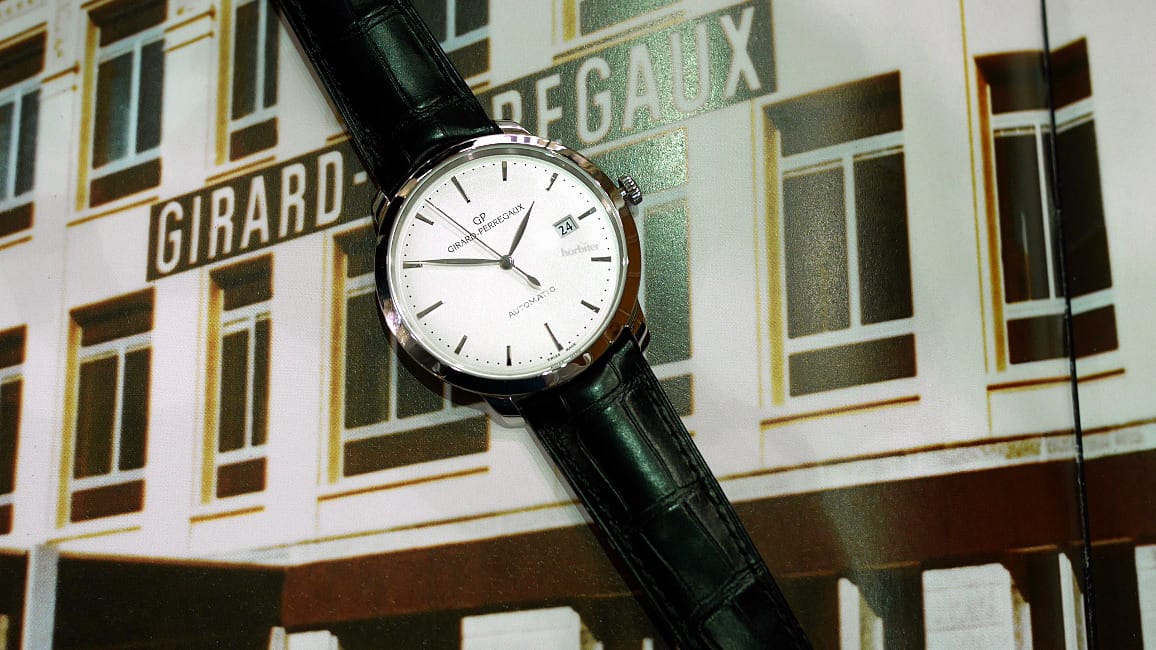It is a fact that the Girard-Perregaux 1966 Steel won’t be remembered solely for being the first steel watch that is part of the 1966 collection. This is the first time that the Swiss manufacturer has used steel material for one of its most classic and iconic timepieces and this change clearly shows the new direction that the brand is taking.
Girard-Perregaux‘s most conservative fans shouldn’t be too worried about this evolution but the launch of this new model definitely marks the beginning of a new era, an era that reminds us of the time of Luigi Macaluso and that will probably culminate with the 2016 launch on the market of some items, which are part of the current brand’s history and are still very sought after.
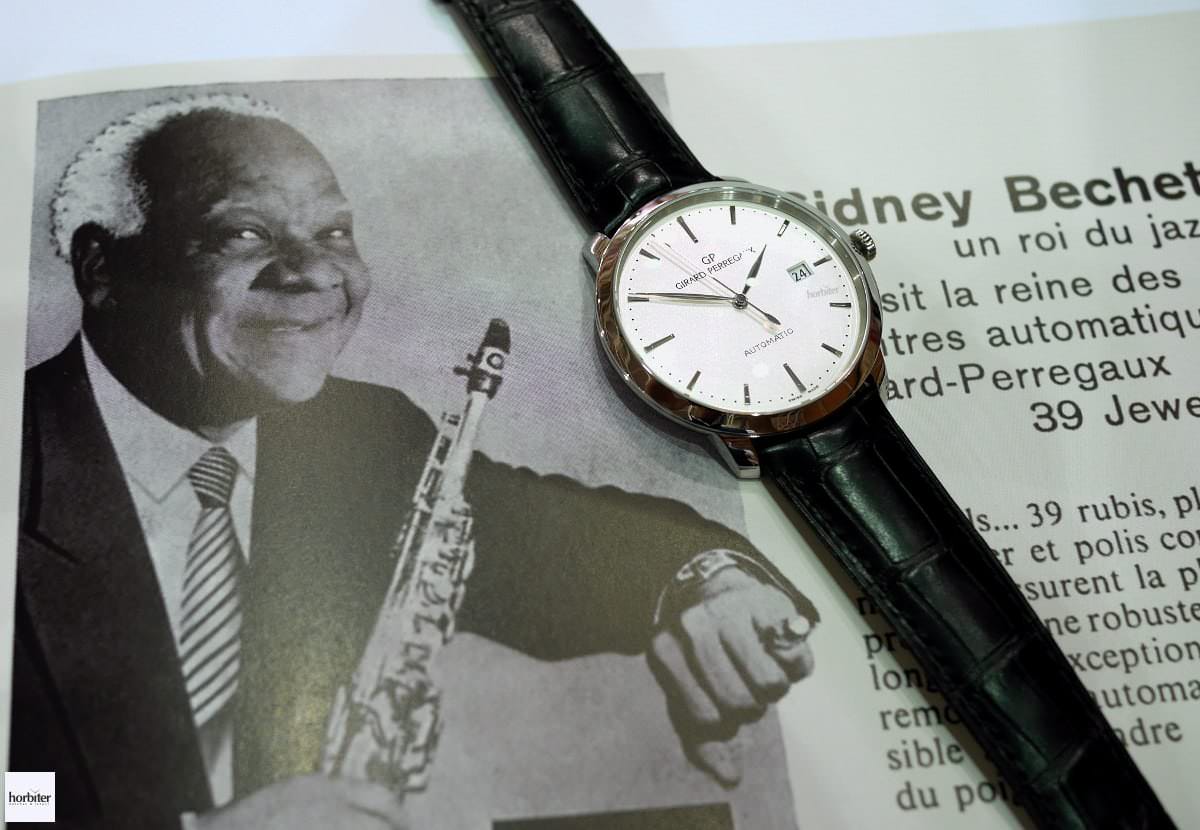 I hadn’t really planned to be able to try on a Girard-Perregaux 1966 Steel before January next year, but I was lucky enough to visit the Artissima exhibition in Turin during a recent trip and Girard-Perregaux was one of the partners of the event. It was a great chance to see again, although for a few hours only, a city where I lived between 2001 and 2003 and to browse around artworks that, unfortunately, I couldn’t fully appreciate because I am actually not too familiar with contemporary art.
I hadn’t really planned to be able to try on a Girard-Perregaux 1966 Steel before January next year, but I was lucky enough to visit the Artissima exhibition in Turin during a recent trip and Girard-Perregaux was one of the partners of the event. It was a great chance to see again, although for a few hours only, a city where I lived between 2001 and 2003 and to browse around artworks that, unfortunately, I couldn’t fully appreciate because I am actually not too familiar with contemporary art.
Talking about this timepiece, however, I think it was high time Girard-Perregaux made the 1966 available to the mass; it is a beautiful and simple watch that is geared towards those who love “no frills” items but, at the same time, it still emanates an aura of snobbery.
In the last years this timepiece had been made available to the public exclusively in its gold versions and that had made it some sort of a watch of its own, detached by nature from the rest of the timepieces mainly because of the use of gold for its crafting (a material that has recently come back in fashion, mainly in its white or pink versions) rather than because of its retail price.
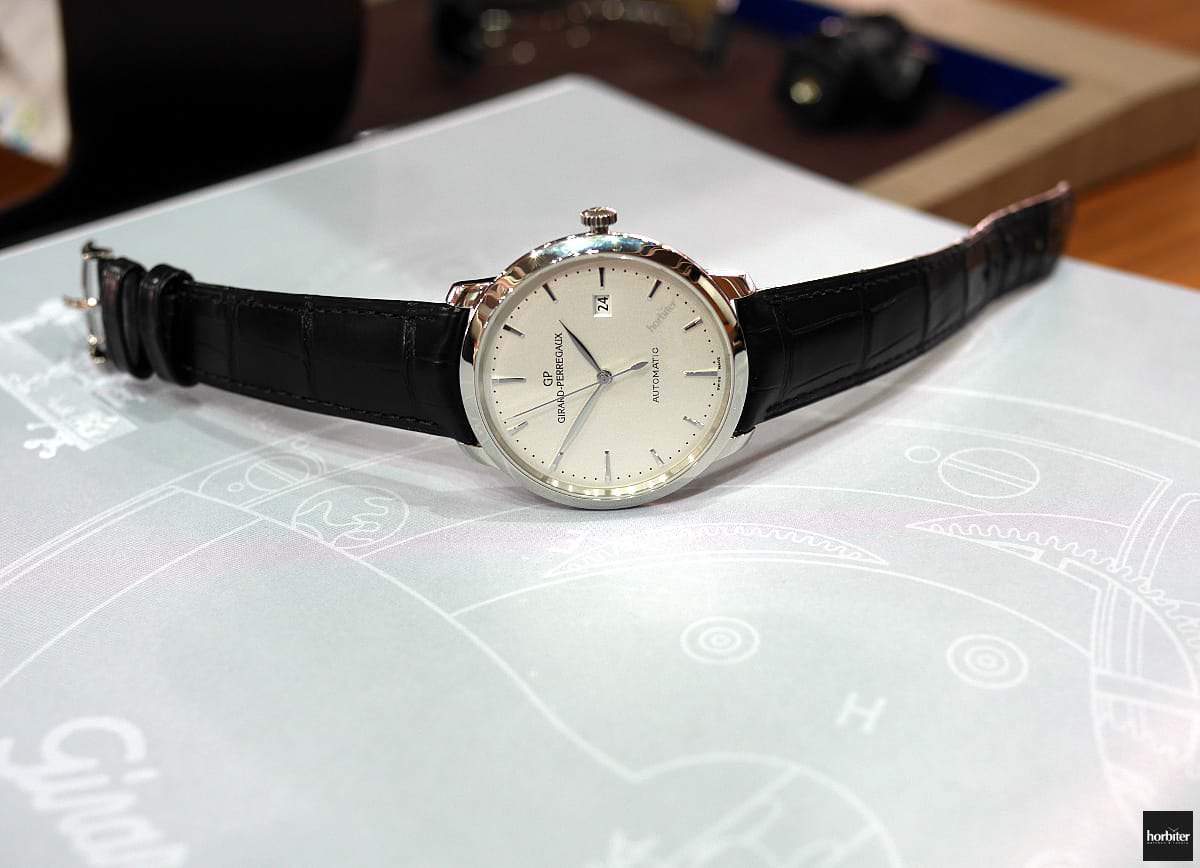 Don’t expect eclectic or eccentric design ideas but also don’t label this timepiece as something that you have seen already, I know that it it would be easy to think that given the classic architecture and style of this watch. The case is round and it measures 40mm, the dial is opal silver in colour and the hands are leaf-shaped.
Don’t expect eclectic or eccentric design ideas but also don’t label this timepiece as something that you have seen already, I know that it it would be easy to think that given the classic architecture and style of this watch. The case is round and it measures 40mm, the dial is opal silver in colour and the hands are leaf-shaped.
The classic take featuring the three automatic hands on a horizontal surface might make these type of timepieces all look the same but you need to take a closer look at the hands if you want to notice the subtle differences that, in this case, are measured in millimetres rather than in centrimetres and that make this timepiece stand out from the rest of crowd.
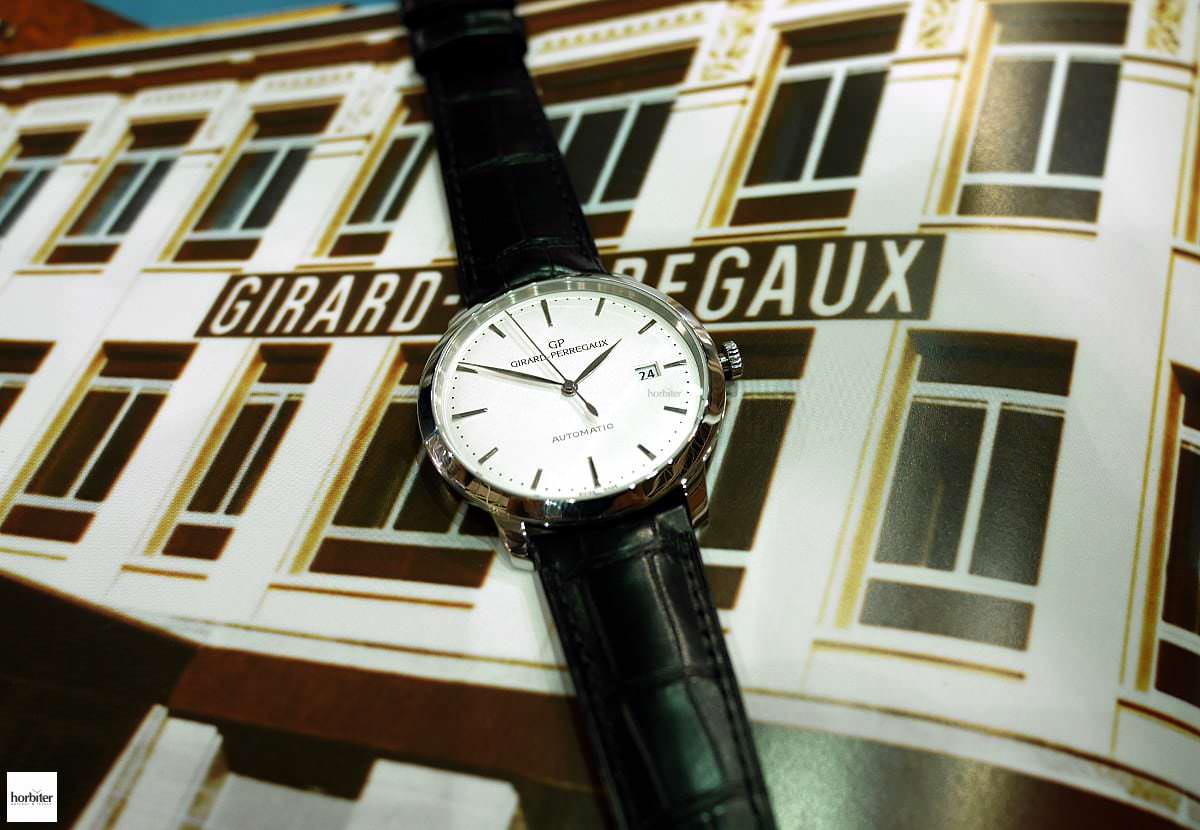 Talking about details, let’s focus for a moment on the hour-markers, which have been applied on top of the hands and have been crafted in the shape of a prism; a rather distinctive touch if compared to the same versions in gold material and I am actually wondering why Girard-Perregaux didn’t apply its GP logo (that is also one of its trademarks) to the hands also, so as to make the design a bit more daring.
Talking about details, let’s focus for a moment on the hour-markers, which have been applied on top of the hands and have been crafted in the shape of a prism; a rather distinctive touch if compared to the same versions in gold material and I am actually wondering why Girard-Perregaux didn’t apply its GP logo (that is also one of its trademarks) to the hands also, so as to make the design a bit more daring.
Despite being a completely different scenario, the dial of the Tri-Axial Tourbillon is the perfect working example of a timepiece featuring an applied logo (it is also true that, in the case of this watch, the assets are many). The hands are thin and leaf-shaped, the seconds hand stretches up to the rim of the dial, while the thickness of the bezel is very limited; an optic effect that makes the 40mm dial look bigger than it actually is, except around the wrist, where the size looks optimal.
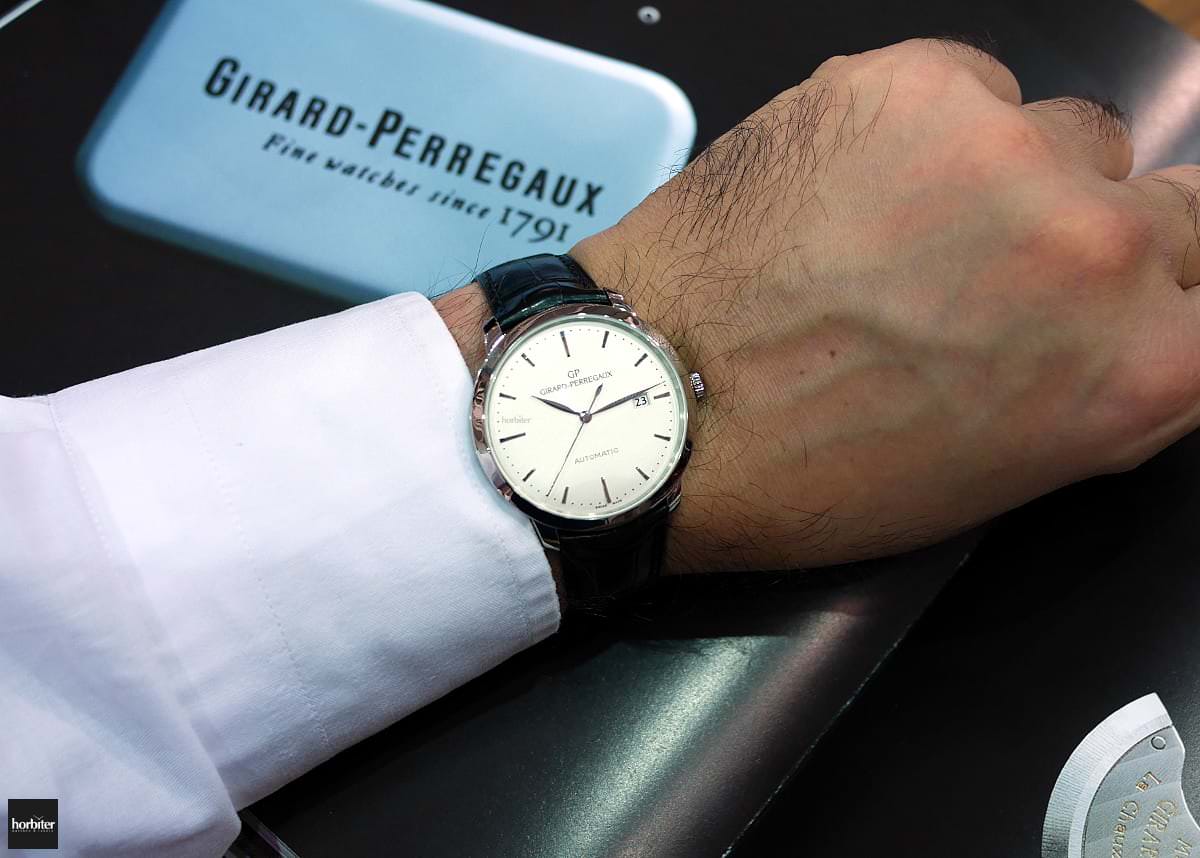 The Girard-Perregaux 1966 Steel is only 8,90mm thick and is equipped with the in-house built GP03300 caliber, it is a mechanic-automatic movement running at 4Hz, it is 3,20mm thick and it ensures up to 46 hours of power reserve. The retail price of this timepiece is 7,850 euros and it features an alligator leather strap with a pin buckle clasp, there is also a more expensive version retailing at 8,550 euros and featuring a steel strap secured by a folding clasp (for the first time these timepieces are selling at a price below the 10,000 euro threshold).
The Girard-Perregaux 1966 Steel is only 8,90mm thick and is equipped with the in-house built GP03300 caliber, it is a mechanic-automatic movement running at 4Hz, it is 3,20mm thick and it ensures up to 46 hours of power reserve. The retail price of this timepiece is 7,850 euros and it features an alligator leather strap with a pin buckle clasp, there is also a more expensive version retailing at 8,550 euros and featuring a steel strap secured by a folding clasp (for the first time these timepieces are selling at a price below the 10,000 euro threshold).
If I were asked to choose between the two models (I have seen the second one in pictures only), I would opt for the first model; in my opinion, a classic 40mm timepiece like this one should definitely feature a leather strap because of the contrast between the bright colour of the dial and the dark colour of the leather strap.
I hope that, in the near feature, Girard-Perregaux will decide to equip these timepieces with a thin manual caliber, although it might not be an easy choice to make when you are crafting only a limited amount of haute-horlogerie pieces rather than mass produced watches, but it would definitely give the 1966 Steel that special boost that it needs to excel even further over other 40mm three hands timepieces that are currently available on the market.
(Photo credit: Horbiter®)
Gaetano C.@Horbiter®
